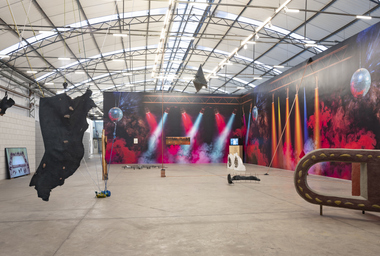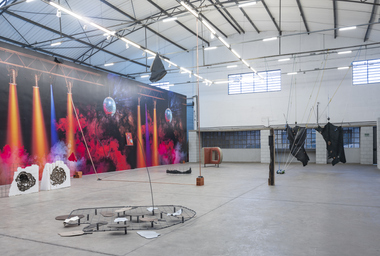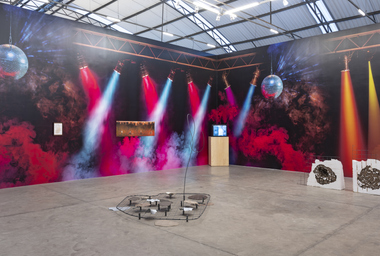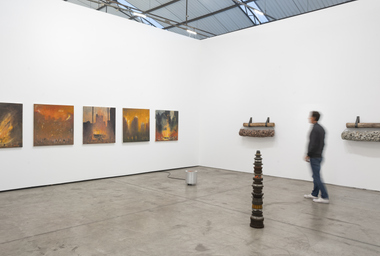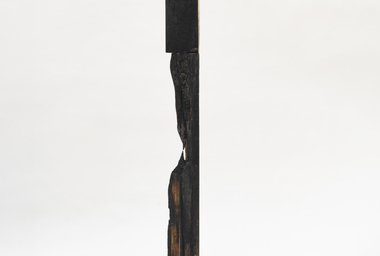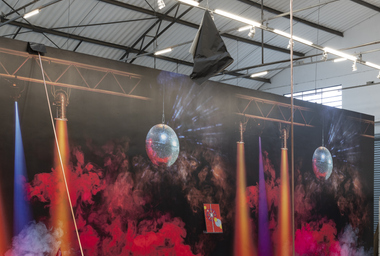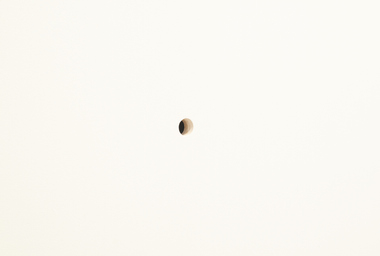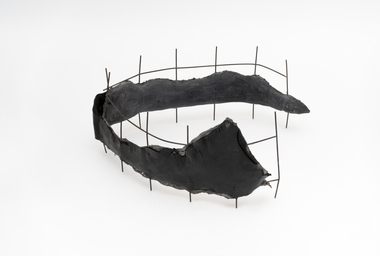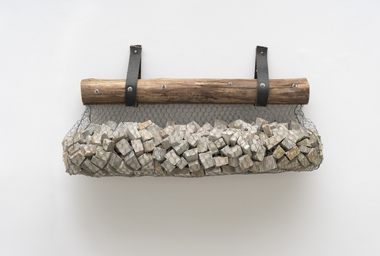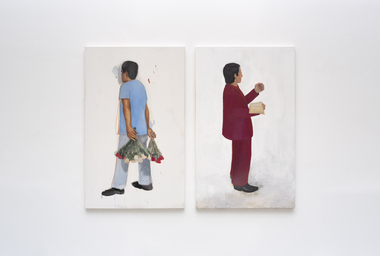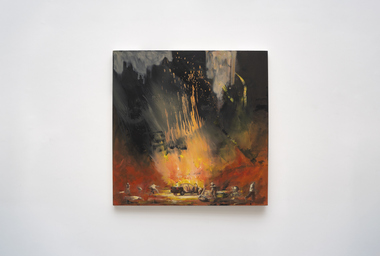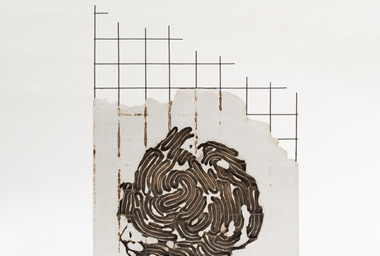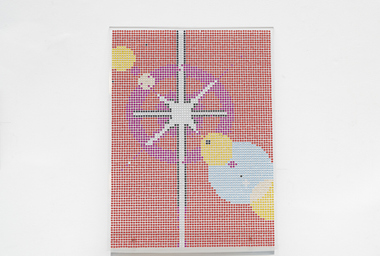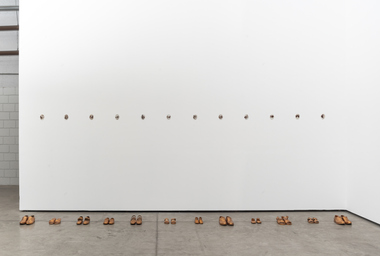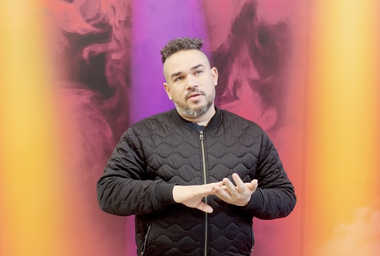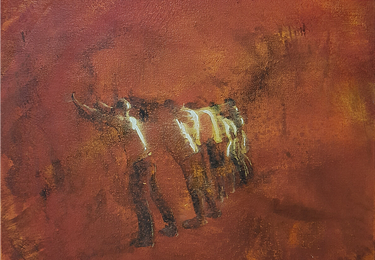
Tragedy!
Aug 20 – Oct 15, 2022
Opening
Aug 20, 2 pm–6 pm
FDAG Barra Funda
Download
Felipe Abdala | Sonia Andrade | Anderson Borba | Carla Chaim | Lucas Emanuel | Ivens Machado | Mateus Moreira | Gabriela Mureb | Rivane Neuenschwander | Renato Pera | Gilson Plano | Mayana Redin | Adriana Varejão
Tragedy!
By Raphael Fonseca
“Vast region of the national territory hit by intense earthquake”, reads a page in the newspaper O Paiz, published on January 28th, 1922. The article continues: “The strange noise, similar to the trembling of a very heavy train going past, lasted for a few seconds”. Meanwhile, a headline in Correio Paulistano screams in massive font: “A huge 4-second earthquake was felt in the capital”. When leafing through the newspaper we find an enthusiastic paragraph authored by a writer signing off with the name Helios: “An earthquake in São Paulo! A tremendous thing. We have everything: cars, trams, airplanes, adulteries with gunshots and other interesting European things. Naturally, we were missing an earthquake”.
***
In the early hours of January 27th, 1922, an earthquake shook the town of Mogi Guaçu, in the state of São Paulo. It was, until then, the biggest earthquake that had ever hit the Brazilian territory, reaching 5.1 degrees on the Richter scale. As far as we know, the event did not result in any deaths, and the seism was felt over a radius of approximately 300 kilometers. As exemplified above, the newspapers reported on the tragedy, commenting on the collapse of a sculpture that once stood at the entrance of a branch of the São Paulo Bank of Commerce and Industry. Approximately two weeks after these events, the São Paulo Modern Week was about to open in the capital’s Municipal Theater. And one of the organizers was, in fact, Menotti del Picchia, the author of the newspaper column “Social Chronicle” under the pseudonym of Helios.
What if the earthquake had devastated São Paulo? And what if the epicenter had not been the town whose name means “large river that meanders”, but the fateful and sprawling city of São Paulo? What if there had been nothing left of the Municipal Theater? And what if the turbulence had led the population to question the point of celebrating the centenary of Brazilian Independence? Independence from what exactly and at what cost? How can we re-read these events in the wake of the both yearned for and feared upcoming celebrations of the bicentenary of Independence, due to happen just a month before this year’s presidential elections? What is the degree, on the Richter scale, of the narratives surrounding the screams and whispers that took place on the margins of the Ipiranga Creek in 1822?
“Tragedy!” is an exhibition that plays, in a non-linear way, with some of the elements that constitute the fabric of these historical facts – an earthquake, the city of São Paulo, the desire for modernism and the tension around the forthcoming elections. Featuring mostly special commissions for the exhibition, the group of works brought together deal with a world that, when looked at in detail, invites us to observe its cracks and enjoy its tragedy in exclamation. The present show is a dialogue between different generations of artists – it is in this transgenerational conversation that we can feel the echoes that constitute a certain recent history of contemporary art and visual arts in Brazil.
In the works of Anderson Borba, Carla Chaim, Gilson Plano, Ivens Machado and Mayana Redin, we see the use of materials such as iron, concrete, wood, plaster, leather, carbon and minerals. Concerned with the notion of sculpture that draws on multiple formal and conceptual departure points, these artists’ practices are more interested in suggesting indicatively rather than affirming categorically. Similarly, though inviting the audience’s body in an esthesic way, Gabriela Mureb and Rivane Neuenschwander introduce propositions that emanate heat and exude the smell of gasoline. Fragment and ruin constitute these artists’ semantic field.
Meanwhile, the pictorial works of Lucas Emanuel and Mateus Moreira invite us to contemplate images in which the human body is the protagonist, and its actions trigger multi-layered narratives in which the notion of confusion is paramount. Adriana Varejão and Felipe Abdala are interested in the disorienting nature of gaps. Be it in the historical relations between painting, surface and the notion of cutting, or in the articulation between drawing, physicality and repetition, both artists propose small labyrinths where visitors can get lost. In the realm of sound, we listen to the voice of artist Sonia Andrade repeating, from time to time, the sentence: “Turn off the TV”. Almost 50 years after the video was first shown, we wonder: could we say anything different about the hyper-stimulus offered by the portable monitors we carry about every day? In dialogue with this work, we have the end of a party – with a touch of the absurd – made of wallpaper by Renato Pera: where are the people that should be celebrating?
As the famous meme goes “this party has turned into a funeral”, at a time when Tarsila do Amaral’s historical paintings worth millions are found hidden under the slats of a bed, everything points to the conclusion that this centenary or bicentenary is better represented by a meeting of debris. Closer to pop absurdity rather than literal catastrophe, let us not forget Bee Gees’ single Tragedy: “Tragedy / When the feeling’s gone and you can’t go on / It’s tragedy / When the morning cries and you don’t know why / It’s hard to bear / With no one to love you, you’re going nowhere”.
Leaving aside independence days and modernist weeks, let us melancholically commemorate the hundred years after those four catastrophic seconds of earthquake. We are left with the desire that, in a few months’ time, this celebratory collective act of joy is emptied of irony and filled with hope.
